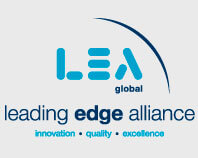Cash-Free, Debt-Free, Tax-Free
Net Working Capital (NWC) is one of the most contentious points in a deal process and a topic that is frequently ignored on the front end of a transaction. NWC is derived from a company’s balance sheet and represents current assets, less current liabilities at a given point in time. However, in the context of a transaction, NWC typically adjusts for the removal of cash, short-term debt and income taxes payable. The reason NWC is reported cash-free, debt-free and tax-free is because these assets and liabilities are the rights and obligations of the seller and customarily, are not agreed to transfer to a buyer upon the closing of a transaction. In fact, NWC and cash left in the business are often confused as one in the same. It is important to note that the NWC target is not the same as cash left in a business. However, depending on the closing date, cash sometimes needs to be left in the business to fund operations. For example, if a transaction is closing mid-month and the company’s payroll cycle is bi-monthly, the parties may want to leave enough cash in the business to cover employee salaries to be paid as a part of the next payroll run. The last thing a new business owner wants is to purchase a business where the employees are unhappy with the acquirers because of a glitch in payroll processing. Remember, any cash left in the business is traditionally reimbursed by the buyer on a dollar-for-dollar basis. With all of this in mind, the following article will highlight various aspects of NWC within the deal process including its multiple uses, how the value is calculated and perceived by a buyer or seller, complexities impacting certain industries and various adjustments typically noted in the diligence process.
Multiple Sources & Uses of NWC
NWC serves multiple purposes in the deal process including: (1) as a key input used in the free cash fl ow (FCF) calculation, which is used in the discounted cash flow (DCF) model for purposes of computing a company’s intrinsic value; (2) as a metric used to help determine cash needed to float the daily operations of a company; and (3) as a representation of the total net current asset or liability value, also referred to as the NWC peg, to be transferred to the buyer upon the closing of a transaction.




